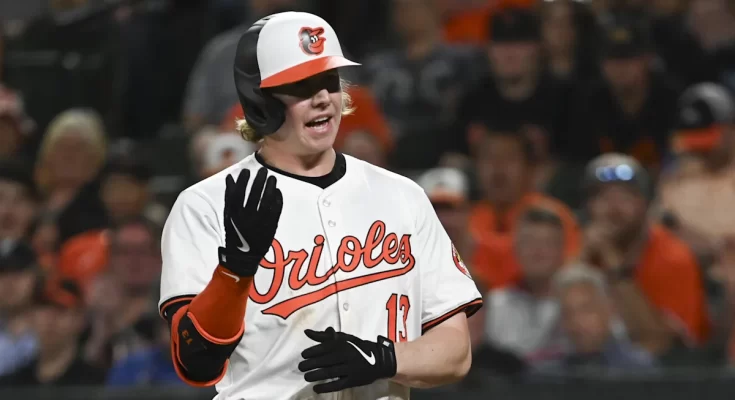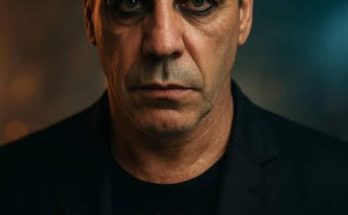Under-the-Radar Orioles Slugger Suddenly Becoming Hottest Name on Trade Market
The Baltimore Orioles front office never expected Ryan O’Hearn to become one of the most sought-after bats at this year’s trade deadline, but the unassuming first baseman/outfielder has forced their hand with a breakout season that has half a dozen contenders aggressively inquiring about his availability. The 30-year-old journeyman, claimed off waivers from Kansas City last winter, has quietly emerged as one of baseball’s most dangerous left-handed hitters, slashing .298/.356/.522 with 16 home runs in just 289 plate appearances while playing surprisingly competent defense at three positions. With the July 30 deadline approaching, O’Hearn’s unique combination of affordability ($3.5 million salary), club control (through 2025), and elite production against right-handed pitching (.931 OPS) has sparked a bidding war that could net Baltimore a far greater return than anyone imagined when they took a flier on him 18 months ago.
What makes O’Hearn’s surge so fascinating is how dramatically he’s reinvented himself since joining the Orioles. In Kansas City, he was a platoon bat with a career .211 average who struck out in 27% of his plate appearances. Under Baltimore’s hitting coaches, he’s transformed into a disciplined line-drive machine with the seventh-lowest chase rate (20.3%) among qualified hitters—sandwiched between Juan Soto and Luis Arraez on that leaderboard. His average exit velocity (92.1 mph) now ranks in the 88th percentile, and he’s done it while drastically cutting his strikeouts (17.3% K-rate). This isn’t just a hot streak; it’s a complete offensive overhaul that has scouts reevaluating his long-term potential. “He’s gone from afterthought to impact bat,” said an NL West executive who recently watched O’Hearn torch his team for three extra-base hits. “That swing plays in any lineup, especially in October.”
The Orioles find themselves in an enviable but complicated position. O’Hearn has been instrumental to their success, providing lineup protection for Adley Rutschman and Gunnar Henderson while filling in admirably at first base, right field, and designated hitter. But with top prospects Heston Kjerstad and Coby Mayo pounding on the door at Triple-A—and Ryan Mountcastle entrenched at first base—Baltimore’s front office recognizes this might be the perfect time to sell high. O’Hearn’s value will never be higher, and with multiple contenders desperately seeking lefty power, the Orioles could leverage his breakout into much-needed pitching help. Industry sources confirm the Mariners, Phillies, and Guardians have been the most aggressive suitors, with Seattle reportedly offering reliever Andrés Muñoz and Philadelphia dangling starter Cristopher Sánchez in separate proposals.
O’Hearn’s affordability makes him particularly appealing to budget-conscious contenders. His $3.5 million salary this season (with one more arbitration year remaining) is roughly one-fifth the cost of comparable bats like the Cubs’ Cody Bellinger, who’s owed $30 million next season. For a team like Cleveland, which ranks last in MLB in left-handed home runs (14), adding O’Hearn’s pop without blowing past their modest payroll could be a game-changer. The Guardians have reportedly discussed packaging young starter Tanner Bibee with a lower-level prospect, though Baltimore would likely need to include additional pieces to make that work.
Defensively, O’Hearn has shattered expectations. Once considered a DH-only player, he’s posted positive outs above average at first base (2) and right field (3) while making several highlight-reel plays. This versatility increases his appeal to National League teams that value roster flexibility, particularly the Phillies and Giants. San Francisco, in particular, sees him as an ideal fit at Oracle Park, where his opposite-field approach could exploit the right-field wall. “He’s not just a rental bat,” said an AL scout. “You’re getting a legitimate two-way player who can help you this year and next.”
The human element adds another layer to this developing story. O’Hearn has become a beloved clubhouse presence in Baltimore, mentoring younger hitters while embracing whatever role manager Brandon Hyde assigns him. Teammates credit his unselfishness as a key factor in the Orioles’ chemistry, and moving him risks disrupting the delicate balance that’s made them baseball’s best team. But with Kjerstad (.312/.394/.584 at Norfolk) and Mayo (.291/.359/.605) forcing promotion considerations, the front office may have no choice but to convert O’Hearn’s unexpected breakout into pitching reinforcements.
From a strategic standpoint, trading O’Hearn now could be Baltimore’s most efficient path to upgrading their rotation. While bigger names like Garrett Crochet and Jesús Luzardo will cost multiple top prospects, dealing from their offensive surplus allows the Orioles to address needs without gutting their elite farm system. It’s the type of creative, forward-thinking move that has defined Mike Elias’ tenure—capitalizing on a player’s peak value to strengthen the overall roster.
The coming days will reveal whether Baltimore pulls the trigger, but one thing is certain: Ryan O’Hearn has gone from waiver claim to one of the most intriguing trade chips in recent memory. His story—a career journeyman transforming into an impact bat just as contenders scramble for offense—epitomizes baseball’s unpredictability. Whether he finishes the season in Baltimore or elsewhere, his remarkable rise serves as a reminder that sometimes the best deadline additions aren’t the flashy names, but the under-the-radar performers having career years at the perfect moment. For the Orioles, that moment might just net them the missing piece for a World Series run.



